The famed poet Ralph Waldo Emerson wrote a verse depicting it as “a personified element that learned through its long life how to navigate the world. It blesses those who use it well and treats those who misuse it poorly. It is abundant yet not to be wasted.”
It is the basis of life, for which without it would not even be possible. We consume it, add it to our foods, wash with it and relax in it. Most humans are naturally drawn to its large bodies. In fact, our very bodies are made mostly of it. If you haven’t figured it out yet, I am talking about water.
Water is a crucial element in our construction environment. It is an essential ingredient in the mixing of our favorite cladding, stucco. And in mixing, proper proportion can be the difference between success and not quite success. But I am writing this article to discuss an often overlooked, or ignored, or not even thought of, very important aspect of the use of water: the wet curing of the stucco cladding.
I wish to first touch on the mixing aspect, specifically the water ratio in a stucco mix. I wouldn’t necessarily classify the water ratios as a critical exactness item, but it is an important one. There are many instances where a tighter mix is required, less water, to achieve a higher build-up than normal. Conversely, it may be necessary to add additional water to loosen the mix, maybe for pumping on an extremely hot day, or to make a mix for a dash bond or a skim coat. My point here is that these slight variations in water ratios are an everyday adjustable feature when applying stucco.
Like Steve Martin in the ’70s, let’s get small, really small, and venture into the freshly applied stucco cladding. Here we see that during the mixing process, the cement particles began to absorb the water and dissolve. Then, through a process known as hydration, everything begins to bind together and through an exothermic chemical reaction (heat), begins forming a calcium silicate hydrate, which is where the stucco gets its strength. The calcium silicate hydrate grows and fills the voids as the water evaporates. This crystalline growth can only happen while water is present. The process happens simultaneously and successively so it is important for there to be sufficient water to “fill the voids.”
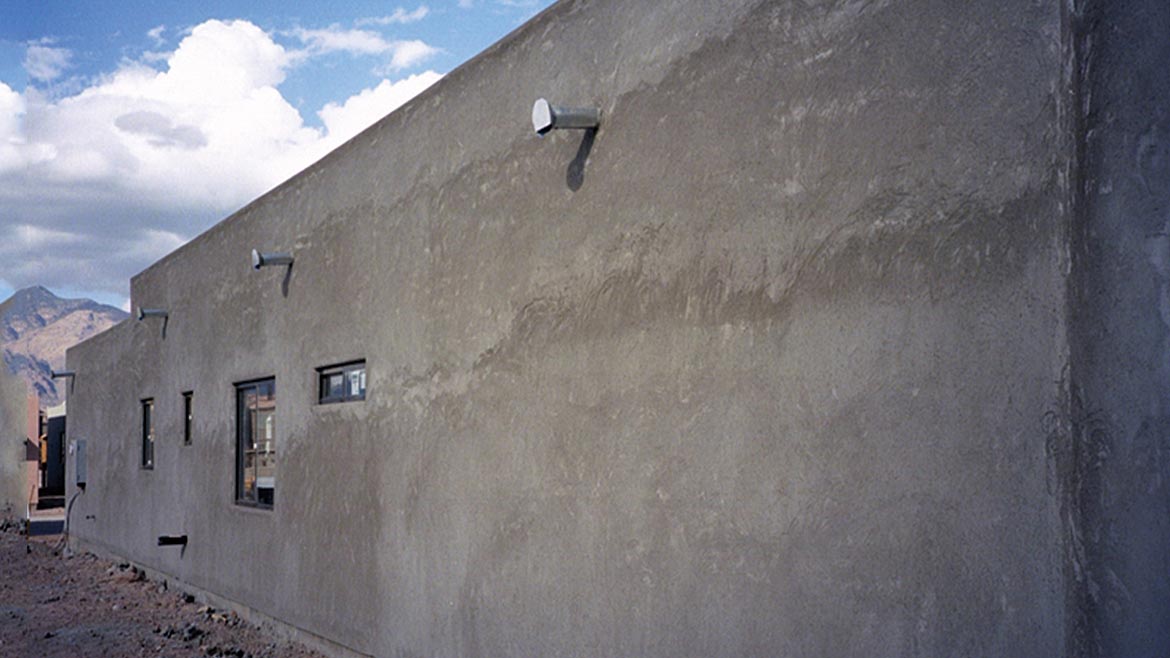
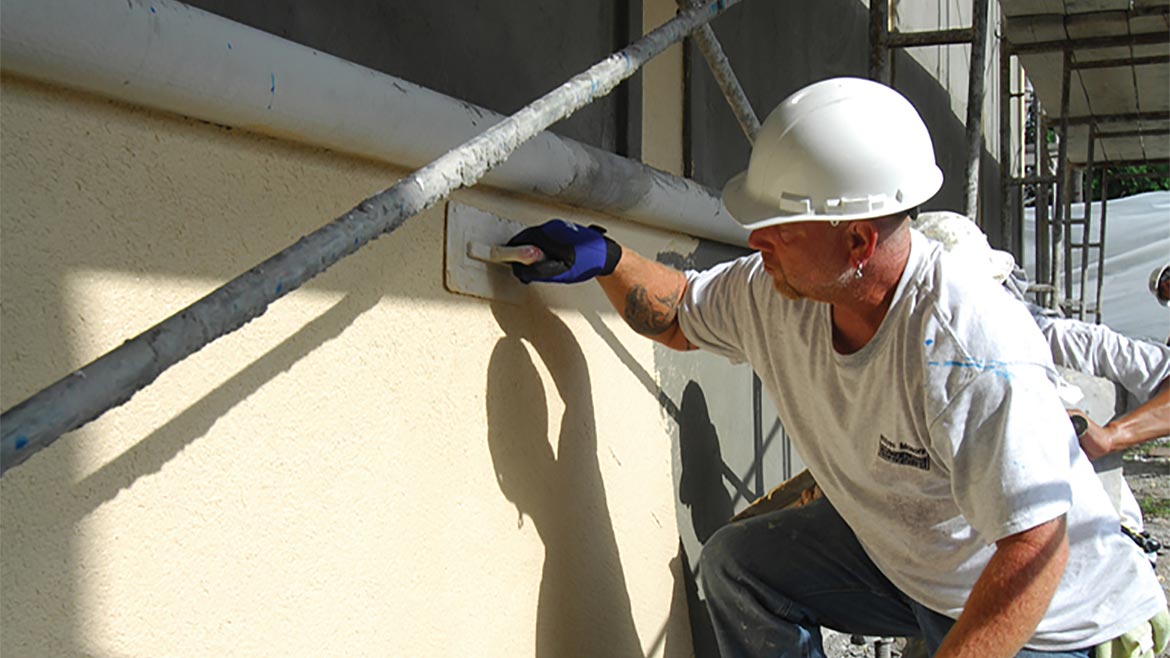
Simultaneously and Successively
If the stucco dries too quickly, it can exhibit stress cracking. Because the hydration didn’t get to fully achieve its potential, the stucco layer is weaker and unable to withstand the drying forces, ergo cracks. The stucco cladding cures simultaneously, all over, and is dependent on successive crystalline growth, which means multiple wet curings. Typically, if cracks are present because of a lack of hydration, they don’t self-heal. I have had plasterers tell me they prefer to have the brown coat cracked because it makes for a good keying of the finish coat. I chuckle.
In my past Arizona stucco days, I can attest to the hot summer winds that rear up and slap all the moisture out of us. This is the same phenomenon that happens to a stucco surface when it is “slapped,” drying the surface of the stucco faster than the underside. We have all seen the dry lake-beds with their symmetrical mud cups, dry on the surface and wetter in the cracks. To an extent, this happens to a wind-dried, un-hydrated stucco surface too.
I want to make sure that it is understood that this hydration process is for every stucco coat: scratch, brown and ideally, cement finish. I say ideally cement finish because when you have a colored cement finish, too much water can mottle it. In the industry, there has been numerous successful applications where the contractor wet cured the scratch and brown but not the finish without any unacceptable cracking. It is my opinion that a well-cured scratch and brown coat will perform as intended for many years.
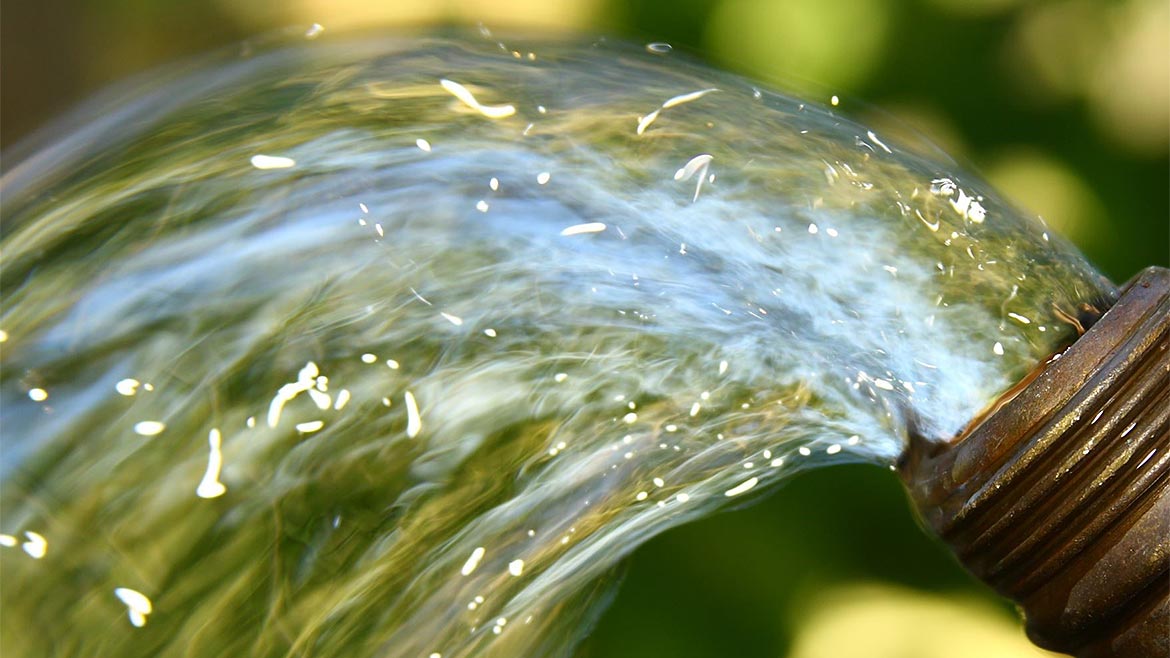
This picture exemplifies a “variegated outpouring.”
Seasons Change
There are a plethora of reasons contractors choose to not wet cure their stucco. One of the most common is that it is not necessary because of the cool temperatures. The fallacy here is that even though the wall may appear dark in color and wet, it only has a finite amount of water retained in it from the initial mix. But this is not enough to achieve full hydration. Remember, one must have successive amounts of water, which means more water, then more water. Each successive pass of nature’s elixir gives life to the microscopic wonder that is crystalline growth, aka hydration.
“But Albert, it rained the next day and the walls got wet. Sorry, not good enough.” On rainy days I would agree, there is no need to wet the walls, standing there getting wet yourself. But, when it stops, you should be out there wetting the walls. You see, Mother Nature is good at making rainfall, but has a lousy aim when it comes to wetting your walls equally and with a relatively consistent quantity on every part of the stucco.
Then there is the old winter excuse. The same rules apply as the two other excuses, I mean reasons, a contractor may not wet cure. The differentiator here is that it just may be longer between wettings. Remember, there is a finite amount of water in the mix that is used to mix the stuff, and additional water is needed for sufficient hydration to occur. There is a unique appearance of the stucco that occurs when stucco dries in really cold climates, it looks wet all the time. It is the same color as when it was applied but is dry and solid to the touch. Don’t be fooled by this, it still needs additional water.
In some areas of the country, additional heat is used to keep the stucco from freezing during application in the winter months. In my opinion, this is the most challenging of conditions where the tops of the walls dry faster than the bottoms. Sometimes the tops will completely dry to the lighter gray color while the bottoms will remain dark. Again, both areas need additional water. Am I starting to sound like a broken record?
It’s About Time
And as a last thought, stucco claddings don’t get wet cured because time won’t allow due to the schedule being shortened. In this instance, I always recommend the contractor submit in writing an objection to said shortening of the schedule and recommending sufficient time to wet cure.
A good rule of thumb is to have the wall wet cured for 72 hours after application. Back in my application days, it was common for the wet cure to be five days. I recall there being a curing crew. Maybe a one or two-person crew who did nothing but drive from job to job, garden hoses in tow, to wet cure the freshly applied stucco coatings. Let’s say one cannot wet cure for 72 hours because you just have to honor the shortened time frame; at least wet cure for 24 hours.
It is my steadfast opinion, one derived from years of applying stucco and looking at stucco issues, that I offer this observation. A perfectly mixed and applied stucco cladding, floated properly under the most ideal conditions, can exhibit issues if not wet cured. A less-than-perfect mix, average application in windy, hot, or cold applications can have no issues if properly wet cured. I have personally “saved” walls by simply wet curing them. It is the simplest, easiest thing a contractor can do to achieve a good stucco cladding that will stand the test of time with no issues. Water: It blesses those who use it well.



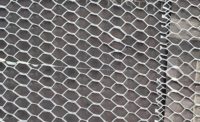
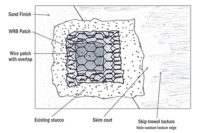

Report Abusive Comment